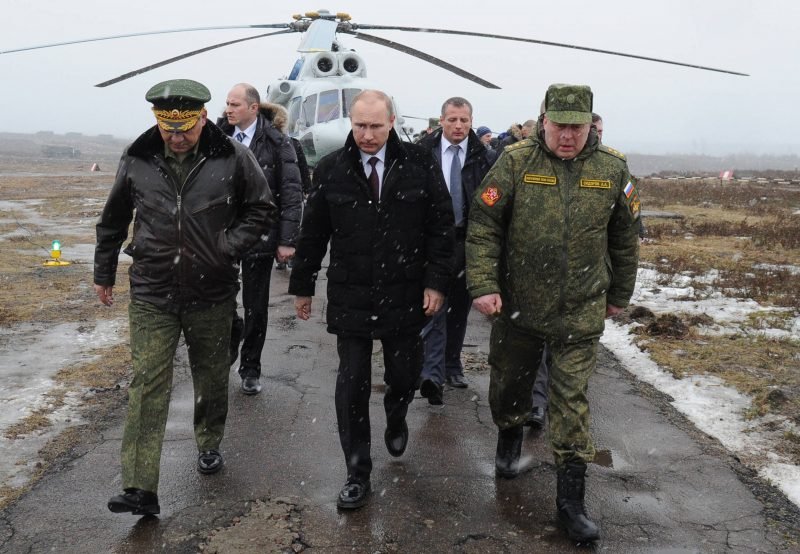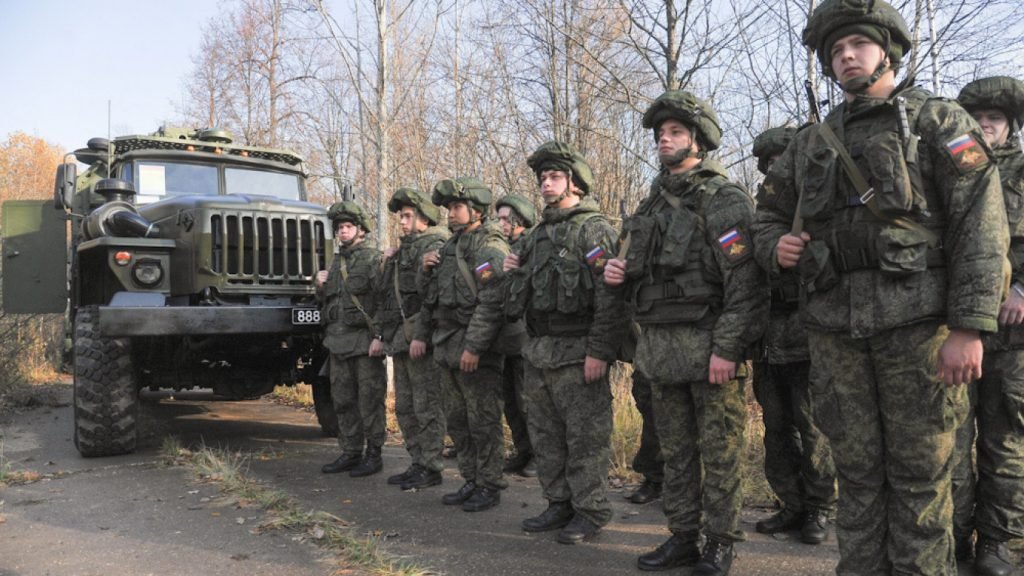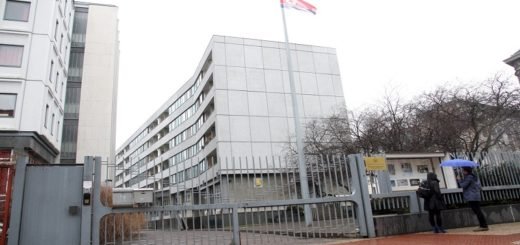Ukraine Crisis: Putin’s twiddling game with the West

The large-scale military build-up on the Russian-Ukrainian border has once again made the West go into frenzy. A repeat of 2014 scenario which played out in the form of Russian annexation of Crimea from Ukraine under the watch of Obama administration, is being forecasted. The entire sequence of events that have taken place in last few days makes it amply clear that the West is dancing on President Putin’s fingers, whether they like it or not. But what are Vladimir Putin’s goals here? And most importantly, how far would the United States go to protect Ukraine in case of a full-scale military invasion? There are countless questions arising out of this crisis that need to be put into perspective, so let’s begin!
After the dissolution of Soviet Union in 1991, Ukraine gained independence and declared itself a neutral state after the end of the ‘Cold War’. Ukraine’s tilt towards western institutions and organizations such as EU and NATO were seen by the Kremlin as a threat to its security. The government of Victor Yanukovych took a decision in 2013 to suspend the Ukraine-European Association Agreement while seeking closer relationship with Moscow. The result was a massive protest called Revolution of Dignity which was ultimately successful in throwing out the Yanukovych government. The internal troubles inside Ukraine provided pretext to Putin’s eventual annexation of Crimea in 2014 which the Kremlin tried to justify by holding a referendum that portrayed a staggering 97 percent support for joining the Russian Federation. The referendum was rejected by the UNGA and the western countries which slapped Moscow with economic sanctions and suspended Russia from G8. Meanwhile, the government of President Petro Poroshenko in Ukraine continued with its pro-EU policies which included joining the Deep and Comprehensive Free Trade Area with EU in 2016. In 2017, the EU approved Visa free travel to Schengen Area for Ukrainians. All these steps were essentially taken to lay the foundation for Ukraine to join the EU and eventually the NATO. And this is where it gets complicated.
The current crisis is due to the overwhelming military build-up by Russia near the Ukrainian border as well as in the seized Crimean Peninsula. Also, there are reports of significant Russian presence in Belarus up along the Northern Ukraine. The Kremlin says that all this is nothing more than military drills but the sheer scale of personnel and sophisticated military equipments has the West spooked. Ukraine’s longstanding wish to join NATO is the major bone of contention here. The Russian justification that NATO’s expansion in Eastern Europe poses a major security threat to Russia, has been the focal point in a flurry of diplomatic talks between Washington and Moscow, the latest being the Geneva talks between foreign minister Sergey Lavrov and US Secretary of State Antony Blinken. Both sides claimed that there was no major breakthrough, and the talks were mostly focused on exchanging each other’s concerns. Europe, meanwhile, is united in rhetoric but divided in action. The new German government headed by chancellor Olaf Scholz has denied any military aid to Ukraine and has also prevented other Baltic states such as Lithuania, Latvia, and Estonia from doing so. These actions are definitely being closely watched by the policymakers in Kiev which is banking on a unified support from Europe. Germany’s dilemma is also exacerbated by the ongoing Nordstream 2 gas pipeline project between Berlin and Moscow. Much of the Europe relies on Russian natural gas for its energy security and Russia has never shied away from using that as a leverage. Annalena Baerbock, the new German foreign minister was recently on a visit to both Ukraine and Russia in an attempt to cool down tensions. Unfortunately, the diplomatic overtures are not bearing much fruit, at least for the moment.

United Kingdom, however, has come out in full support for Ukraine and condemning Russia’s aggressive actions, even sending military aid. The UK has also claimed that Putin is trying to topple the current Ukrainian government and install pro-Russian officials, basically hinting towards a comeback for Victor Yanukovych. There is enough verbal support for Ukraine from the West, but it remains to be seen how much of it gets translated into action if Putin goes ahead with an invasion. The impact of sanctions that followed the 2014 Crimean annexation does not instil much confidence when it comes to using economic sanctions as a deterrent against Russia. In a recent press conference, President Biden vowed sanctions on Russia, the likes of which the world has never seen, if the unfortunate happens. However, the United States’ sanctions policy seems to be losing its charm worldwide.
Irrespective of the equation between Russia and the West, the Russian-Ukrainian problem has a very internal dimension to it. Western Ukraine is mostly pro Europe while the eastern part leans a lot towards Russian side. The demography and language play a huge role in this west and east divide. Eastern Ukraine’s two regions, Donetsk, and Luhansk have been in a state of Civil War since 2014. The armed insurgency was led by Russian emissaries Igor Girkin and Alexander Borodai as well as militants from Russia, such as Arseny Pavlov. Kiev accuses Moscow of supporting the rebels with arms and ammunitions. Some experts also believe that Vladimir Putin is using this manufactured crisis as a diversion from the internal problems that Russia is facing including the economic fallout from COVID-19. Also, there is the issue of Kremlin critique Alexei Navalny who has been lodged in Jail for months now. The US and its allies backed Navalny in calling out Putin’s human rights abuses and the corruption allegations including Putin’s personal amassing of wealth. Russia and the west have been at loggerheads with each other on various issues and Ukraine is just one of them.
Although US is hesitant to put boots on the Ukrainian soil, it has sent ‘lethal’ military equipments as aid for the Ukrainian forces. There are also talks of cutting Russia out of the international SWIFT banking system which would have catastrophic consequences if Washington goes ahead with this idea. The western capitals are on the edge as to what Vladimir Putin would do next and as Mr. Blinken put it, “The ball is in Russian court.”
The whole saga seems to be Putin’s reminder to Washington not to forget him while it concentrates on China with Xi Jinping’s incessant rhetoric of ‘national rejuvenation’ that might involve a military invasion of Taiwan. The US needs to be prepared for a two-front engagement, military or otherwise, if this scenario plays out no matter how unlikely it seems at the moment. As far as Ukraine is concerned, Europe needs to come together, speaking in one voice and acting in sync if it wants to keep Vladimir Putin at bay.


















